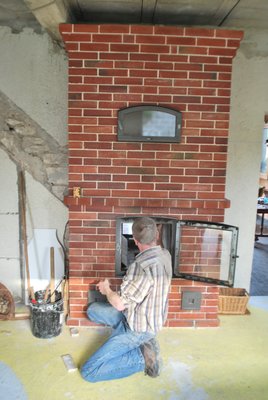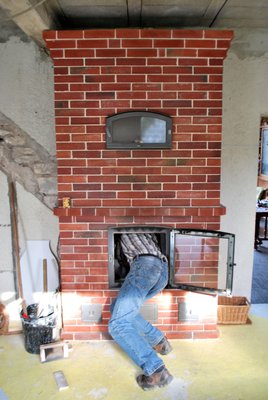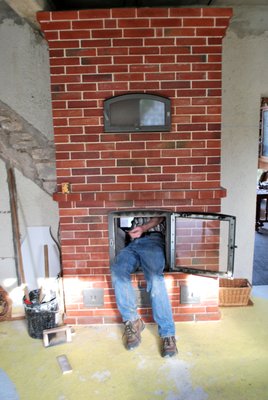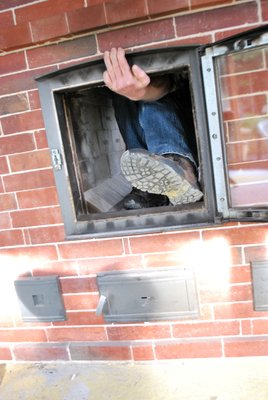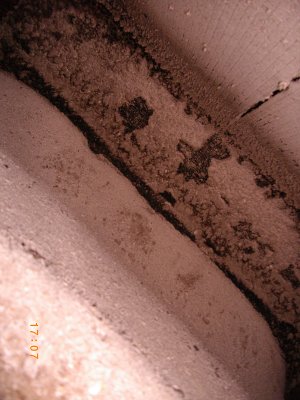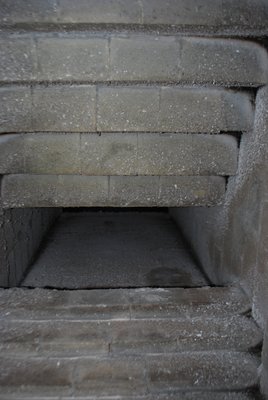Observations In The Upper Chamber
The object of this investigation was to view the flat upper surface of the oven’s top slab, and determine the amount of fly ash left on the slab after combustion.
With this oven, the top slab is of flat rectangular form, rather than being curved.
The advantages of using a flat slab are: When pouring in the field, and staying within the manufacturer’s recommended water content bracket, it is much easier to work with a simple flat rectangular form than a curved form.
The flat upper surface of the slab makes it possible to install a load relieving lintel, relieving the top slab of all mechanical stress, other than that from its own weight.
The disadvantage of the flat rectangular slab is: There could be a potential build up of ash, on the upper surface of the slab, which would act as an insulant and reduce transfer into the oven through the top slab. With a curved oven slab, fly ash would surely be removed by the draw, if depositing at all ?
The use of a flat slab may be seen as cutting corners, by a client who is overly attached to the archetypal curved image of an oven.
When using a flat top slab the side walls of the bake chamber need to be higher, so there is more surface area of slab, and walls exposed inside the bake chamber than with a curved slab, which follows the extrodus of the loading opening door. There is also more of the back slab, at the upper corners, exposed in the bake chamber.
With the contra-flow stove shown here the area above the oven can be accessed without much difficulty.
Observations can be made via the fire tube using a periscope, and torch, and any necessary cleaning done with a bottle brush or vacuum cleaner. The under hearth channel of the oven is also accessible.
The area above the oven can be easily photographed if the observer is able to enter the core through the fire box.
The stove here is at the end of its second season, and during the last months has been fired exclusively with poplar.
This image shows the upper chamber to be white, and relatively free of ash. The line of the back top corner of the top slab can be seen in the foreground at the bottom left corner of the image (running diagonally). Then the rough surface of the slab, which was not troweled smooth during pouring. And a small deposit of fly ash in the corner between the load relieving lintel and the top slab.
In this image ash build up can be seen only in the corner formed by the top slab and load relieving lintel. It seems that for the most part the slab is kept clear of fly ash by the draw.
The addition of an access opening in the facing above the oven arch would allow easy regular access to this area. Though if ash build up is negligible the aesthetic problems of the additional iron door on the facing can be avoided. Keeping the upper chamber free of openings through the facing, ie clean outs, and bypass, may also be desirable for other reasons.
Marcus Flynn
2010
